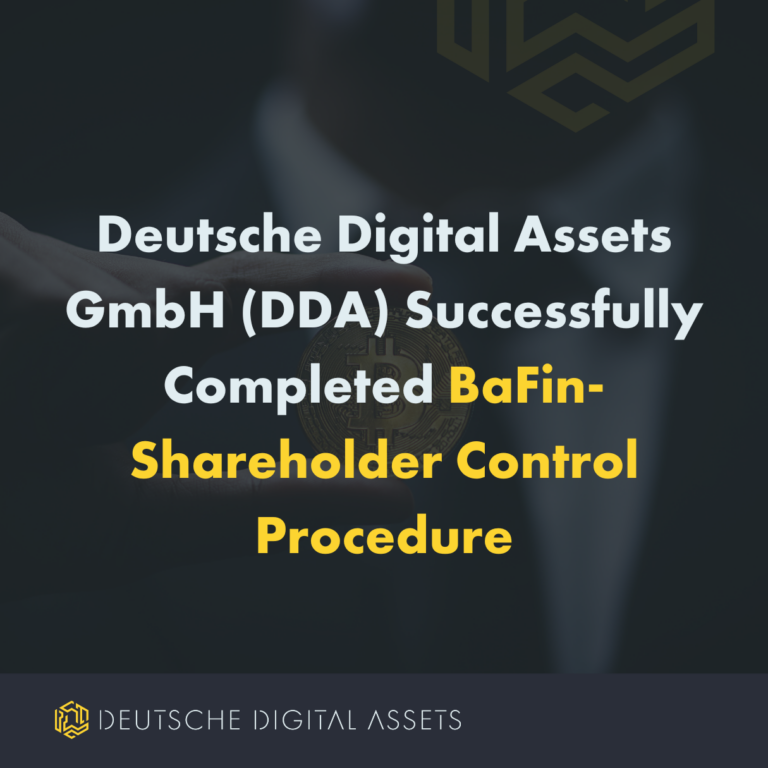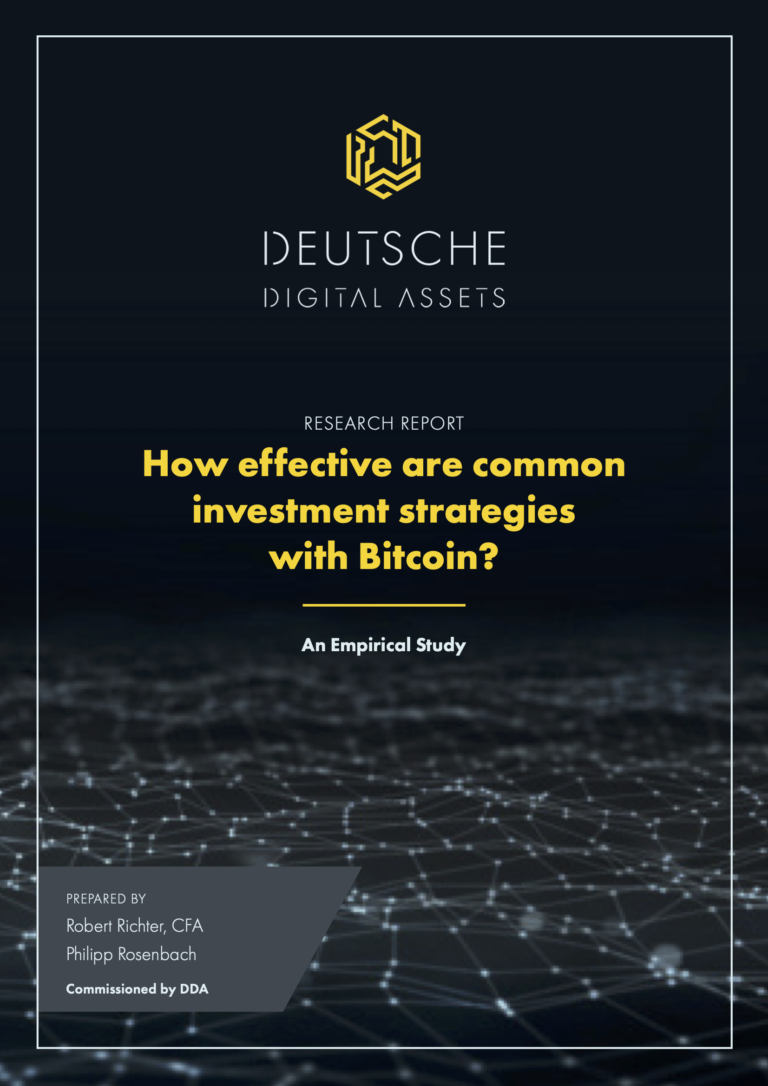
The crypto asset market faced one of the most challenging times in its short history in May 2022. Terra (LUNA) and Terra USD (UST) – two of the biggest cryptocurrencies with a combined value of over $80 billion – collapsed. The contagion effect resulted in billions of dollars wiped off the crypto market and several crypto businesses with exposure to these crypto assets going bankrupt. Though much has been written regarding this event, this piece will add to your knowledge of the Luna and UST collapse, explain how algorithmic stablecoins work, and why none of the algorithmic stablecoins have yet succeeded.
The Collapse of Luna and UST: Here’s What Happened
Before the crash, Do Kwon, the founder of Luna, had been super bullish about the future of Terra. However, that didn’t last too long as the flaw of Terra’s algorithmic stablecoin model was quickly revealed and necessitated its demise.
How Did TerraUSD Work?
To understand what happened during the collapse, you have to get how Luna (LUNA) and TerraUSD (UST) work.
Luna is the native cryptocurrency of the Terra blockchain. The Terra protocol created the fiat-pegged stablecoin, Terra USD (UST), to provide a stable currency with censorship resistance for fast payment settlements around the world.
Luna, as the native currency of this blockchain, allowed holders to participate in the governance of the Terra blockchain, making it a governance token. However, the main purpose became to manage the price of UST as part of the stablecoin’s algorithmic price stability mechanism.
That is, if the demand for UST goes up (and its value exceeds one U.S. dollar), LUNA tokens are burnt to mint more UST. Conversely, if the demand for UST goes down, LUNA is minted, and UST is burned to maintain the stablecoin’s peg.
To boost the adoption of UST, the Terra ecosystem created a protocol called Anchor Protocol that provided about 20% APY when you deposit UST on the platform. This became the Achilles heel of the ecosystem.
How Events Unfolded
Signs began to appear in February when Anchor’s reserves started to dry up. This occurred as more people were depositing to earn interest than lending on the protocol. The Luna Foundation Guard (LFG) was forced to help out and provide Anchor with $450 million to ensure the platform can keep attracting people to buy and deposit UST. The foundation also started to buy Bitcoin (BTC) as a reserve to defend the UST peg.
A few months later, as the LFG was preparing to create a 4-pool on Curve Finance, they withdrew $150 million from Curve Finance’s 3-pool. A few minutes later, a wallet address drained $350 million UST from the Curve 3-pool. This led to the slight de-pegging of UST to about $0.972. It was also accompanied by a significant withdrawal of UST from the Anchor Protocol. Thereafter, rumors, panic, and doubts began to grow about the project.
Then, the LFG began a rescue mission to restore the peg. It started selling its BTC holdings to buy UST and defend the peg. However, a huge sell-off of UST also continued apace (possibly from an attacker). The Anchor protocol deposits also continued to be depleted as people withdrew as fear grew. As people withdrew, they also sold UST, which led to even more selling pressure.
As people were selling off UST without enough demand, the Terra protocol kept printing more LUNA. Also, the massive panic led to huge selling pressure on Luna itself as people were fleeing for safety. Ultimately, this meant a death spiral the Terra ecosystem couldn’t recover from and brought other cryptocurrencies crashing alongside it.
Why UST Was Bound to Fail
Some critics highlighted the flaw of the Terra ecosystem for a while before its crash. The crux of the criticism was the fact that the stablecoin relied too much on the only use case of the Anchor Protocol to provide an appealing APY on UST deposits which were unsustainable.
UST was also backed by a volatile cryptocurrency, Luna, which wasn’t a proven cryptocurrency yet.
The mechanism of the UST did work as intended in the event of the stablecoin de-peg, which meant Luna’s total supply jumped from 725 million tokens to about 7 billion, but Luna lost 99.9% of its value during the same period.
Without much use case for UST aside from offering UST holders an unstainable 20% APY, it was always a concern that a little bit of hysteria could lead to dumping the stablecoin. In turn, the cryptocurrency backing it wouldn’t be able to keep it stable.
What Are Algorithmic Stablecoins & How Do They Work?
Stablecoins are cryptocurrencies meant to keep their value relative to another asset. The most common are dollar stablecoins pegged 1:1 to the U.S. dollar and collateralized by the same asset. They are typically used as a hedge against the volatility in the crypto market. Additionally, they are used as trading capital, and a means to make digital cross-border payments.
Algorithmic stablecoins are a type of stablecoins that aren’t collateralized by any assets. Instead, they use algorithms, which are specific mathematical rules, to manage the stability of the coin. These algorithms are often designed to dynamically reward traders for stabilizing the price around its peg.
Though there are different kinds of algorithmic stablecoins that work differently, generally, they are all powered by rules and instructions written on a smart contract. The smart contract is typically publicly available for anyone to access and view.
Algorithmic stablecoins instruct the smart contract to mint or burn supply from circulation in relation to the coin’s price deviation from its $1 peg. When the price goes above $1, it mints coins, and when the price goes down, it burns coins.
Algorithmic vs. Collateralized Stablecoins
Algorithmic stablecoins are typically not backed by another asset, instead using a burn and mint mechanism to maintain price stability. A collateralized stablecoin, on the other hand, is minted or burned when the collateral asset is deposited or withdrawn from its protocol reserves. They are, therefore, backed by assets that are meant to ensure price stability.
An example of this is DAI, which is pegged to the U.S. dollar. It is collateralized by a mix of several other cryptocurrencies like Ethereum, Wrapped Bitcoin, and USDC. These cryptocurrencies are deposited into its smart contract reserves every time a new DAI is minted.
Other collateralized stablecoins include USDT, USDC, and BUSD, which are backed by U.S. dollars. However, stablecoins collateralized with traditional assets are managed by centralized companies, unlike DAI.
DAI used to be only collateralized by just ether (ETH) and regarded as a completely decentralized stablecoin. However, a few years ago, it was at the risk of completely losing its peg to the USD with the price of ETH crashing. As a result, it decided to add other coins like USDC, which is a centralized stablecoin, to its collateral.
However, even collateralized stablecoins aren’t without drawbacks. The centralized nature of the dollar-denominated collateral held at regulated financial institutions opens stablecoins up to regulatory and compliance risks. As a result, they can easily be controlled or influenced by the authorities.
For example, USDC-issuer Circle blacklisted sanctioned wallet addresses from users who utilized the Tornado Cash mixing service, freezing funds held in these wallets.
Stablecoin Use Cases

Remittance
Sending money internationally typically incurs high fees and can take days. Stablecoins lower the fees for international transfers and enable people and businesses to transfer money across borders within minutes.
Payments
Payments are one of the obvious use cases for stablecoins. Businesses can do away with the fees incurred from traditional payment methods and companies acting as intermediaries.
Gig workers and freelancers can receive payments easily from anywhere in the world. For example, a company in the United Kingdom can hire a contractor based in Nigeria and pay in stablecoins.
Trading Capital
One of the prevailing use cases of stablecoins right now is as trading capital. Most crypto exchanges use stablecoins like USDT as a base currency for trading pairs. Fiat on- and off-ramps are typically costly and slow. However, with stablecoins, crypto traders can enter and exit positions from and to a fiat-equivalent seamlessly.
As a result, Tether USDT (USDT) is one of the biggest cryptocurrencies by volume as it has become the leading base currency for crypto trading pairs on exchanges and in the OTC market.
Safe Haven Asset
Stablecoins have a stable value, which means they can be ideal for countries with volatile currencies. Generally, stablecoins should be a good store of value. And because they operate on the blockchain, people can self-custody their assets in cases of volatile government administrations.
Why Crypto Needs a Decentralized Stablecoin
While the collapse of TerraUST has shone a light on the inherent faults of current model of algorithmic stablecoins, for decentralized finance (DeFi) to truly thrive, the market will need a robust, price-stable decentralized stablecoin.
Centralized stablecoins can easily be controlled or influenced by the authorities, as witnessed by Circle’s blacklisting of TornadoCash users’ USDC wallets, making them unsuitable for a truly global, decentralized digital economy.
Without a decentralized stablecoin, the DeFi market will never truly become decentralized and autonomous.
Terra was an experiment that the whole crypto ecosystem can learn a good deal from. Even though this experiment failed, the industry has to develop a stablecoin that is completely independent of the existing fiat infrastructure.
This is important for the continued rapid growth of the DeFi space, as it allows it to develop into a self-sustaining financial economy. At its core, the DeFi markets will need a stable currency that is not susceptible to the whims of central banks or governments.
About Iconic Funds
Iconic Funds is the bridge to crypto asset investing through trusted investment vehicles. We provide investors both passive and alpha-seeking strategies to crypto, as well as venture capital opportunities.
We deliver excellence through familiar, regulated vehicles offering investors the quality assurances they deserve from a world-class asset manager as we champion our mission of driving crypto asset adoption.
Recent News and Articles
- The Case for Actively Managed Investment Strategies in the Crypto Markets
- Iconic Launches Actively Managed Crypto Investment Platform with Recently Acquired Quantitative Solutions Team
- How to Invest in NFTs: A Guide for Professional Investors
- Bitcoin vs. Gold: Why You Are Probably Better Off Buying “Digital Gold”
- Why Bitcoin’s Volatility Shouldn’t Scare You
- How accurate is the Bitcoin Stock-to_Flow Model?
Iconic in Press
- ETF stream: White-label issuers in Europe quietly tripled in a week
- ETF strategy: Iconic Funds debuts world’s first ApeCoin crypto ETP
- Das Investment: Kryptowährungen kommen 2022 im Mainstream an
- Private Banking Magazin, Bitcoin – das perfekte Beispiel für ein ESG-Investment?
- Institutional Money, Krypto-Manager steigt bei Family Office ein
- Morningstar, Iconic Funds Expands Product Range With a Physical Ethereum ETP
Recent Research Reports

How did portfolios perform during the pandemic? ➡ Download here
Analyzing the Primary Value Drivers of Leading Cryptocurrencies ➡ Download here
How Effective are Common Investment Strategies with Bitcoin? ➡ Download here
Investigating the Myth of Zero Correlation Between Crypto Currencies and Market Indices ➡ Download here
For further information, please visit deutschedastg
Legal Disclaimer
The material and information contained in this article is for informational purposes only. Iconic Holding GmbH, its affiliates, and subsidiaries are not soliciting any action based upon such material. This article is neither investment advice nor a recommendation or solicitation to buy any securities. Performance is unpredictable. Past performance is hence not an indication of any future performance. You agree to do your own research and due diligence before making any investment decision with respect to securities or investment opportunities discussed herein. Our articles and reports include forward-looking statements, estimates, projections, and opinions. These may prove to be substantially inaccurate and are inherently subject to significant risks and uncertainties beyond Iconic Holding GmbH’s control. We believe all information contained herein is accurate, reliable and has been obtained from public sources. However, such information is presented “as is” without warranty of any kind.













